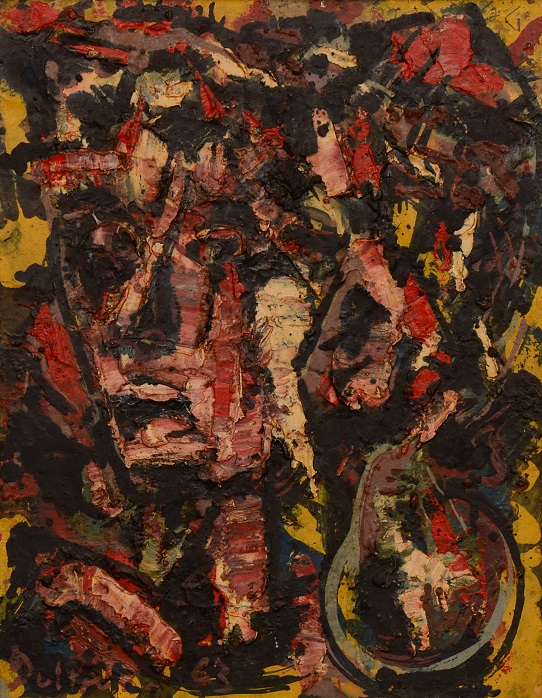Juan Del Prete (1897 – 1987) was a self-taught painter, draftsman, sculptor, and photographer. He was a crucial early figure in Argentine modern and non-figurative art.
A true groundbreaker and a maverick, Del Prete remained at the margins of the many artistic groups formed by his fellow avant-garde artists; he never signed a manifesto, and the work itself was always his framework. Sometimes figurative and sometimes abstract, his compositions revolved around pictorial material and color. By temperament, he was wary of artistic formulas and grand ideas. In its diversity, his work—and the conceptions behind it—befits a painter who did not adhere to any particular tendency. His style was too spontaneous to allow for repetition; his avantgarde vision was an authentic expression of his personality.
In the nineteen-thirties, he came into contact with the dynamic venues of abstract art in Paris. Along with European artists like Bill, Calder, Kupka, Mondrian, and Moholy-Nagy, he in the second issue of the magazine Abstraction Création (1933). His shows at the Amigos del Arte in 1933 and 1934 were the first ever of non-figurative art in the country. The first featured paintings he had produced while in Paris, and the second sculptures in plaster and wire.
He was awarded the International Grand Prize of Brussels (1958); the Palanza Prize (1958)—the first time that recognition was given to non-figurative works; the Grand Prize at the Salón Nacional, Buenos Aires (1963); and the Grand Prize Internazionale il Collezionista, Milan (1975).
He was one of the artists representing Argentina at the IV São Paulo Biennial in 1957, and at the 1959 edition a special gallery was installed to exhibit some twenty abstract works of his authorship. He represented Argentina at the Venice
Biennale in 1952 and 1959.
His work forms part of the following collections: Museo Nacional de Bellas Artes – MNBA; Museo de Arte Latinoamericano de Buenos Aires – MALBA; Museo de Arte Moderno de Buenos Aires – MAMBA; Museo Castagnino + Macro; Museo de Artes Plásticas Eduardo Sívori; Colección de Arte Amalia Lacroze de Fortabat; Museo de Arte Contemporáneo La Plata – MACLA; and others, as well as outstanding private collections in Latin America, United States and Europe.


 Del Prete Juan
Del Prete Juan